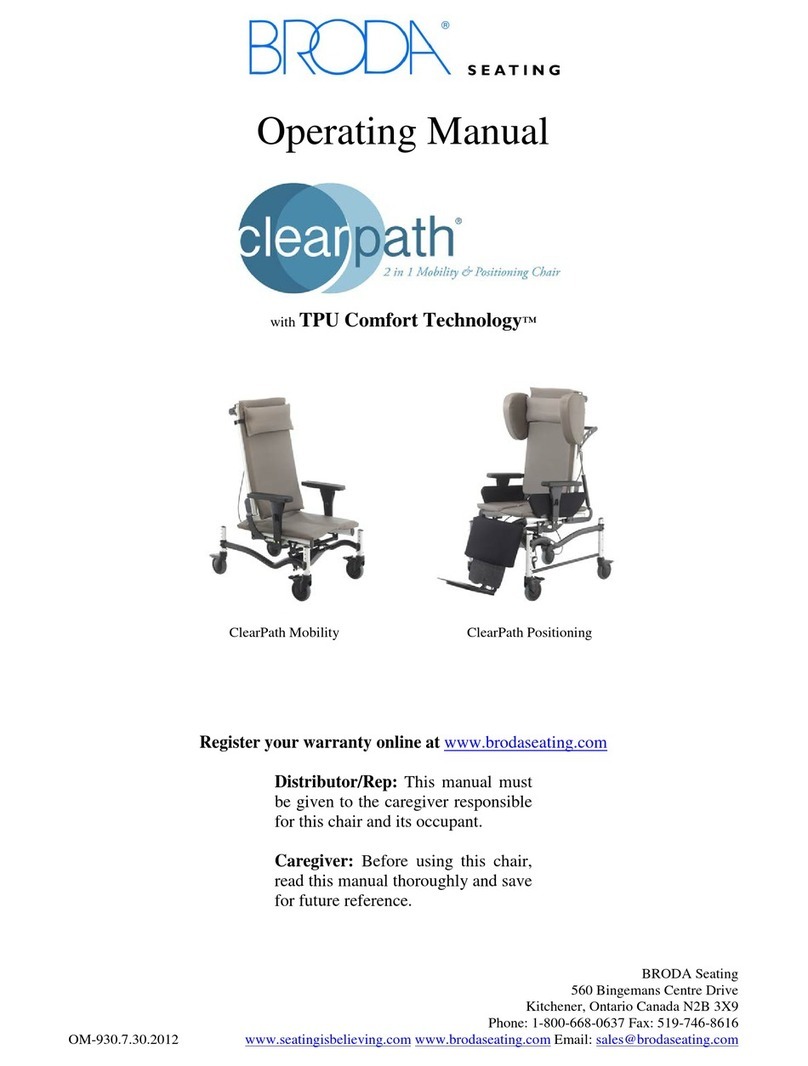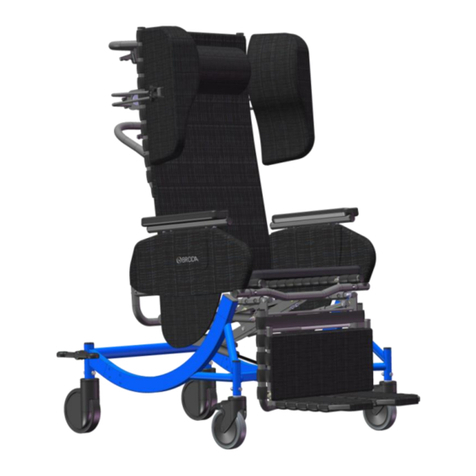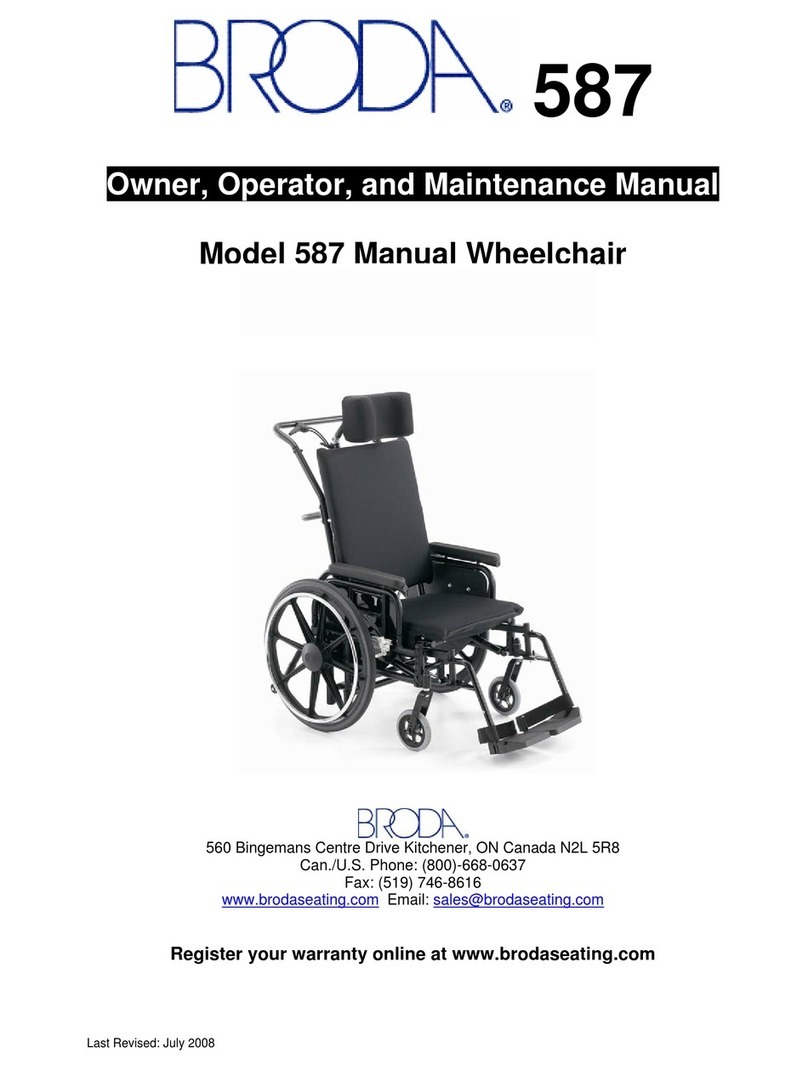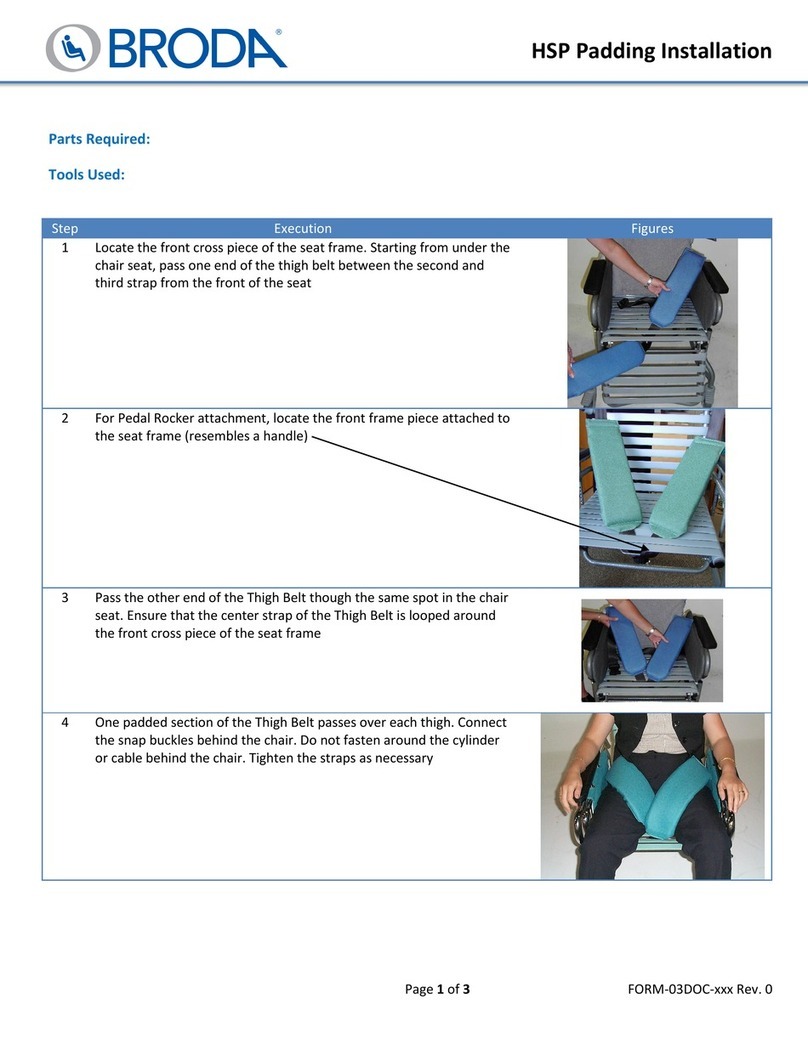
BRODA Elite Chairs
6
If a physical restraint is determined to be appropriate to prevent sliding or falling out of the chair, we recommend
that the BRODA thigh belt be used. If a physical restraint is determined to be appropriate to prevent self-injury from
resident movement, we recommend the BRODA HSP padding package. In all cases, it is the resident’s primary
caregiver that must take responsibility for the safety of the resident if restraints are used.
1.12 Improper Use
The improper use of the chair can be dangerous to the resident, caregivers, or third parties through:
1) Unauthorized operation of the chair’s functions.
2) Unauthorized movement of the chair.
3) Inappropriate use of the chair for a resident who has not been assessed by the caregiver
responsible for their seating.
4) Failure to reposition the resident frequently in the chair
5) Attempted simultaneous operation of multiple chair functions by one or more caregivers.
6) Attempting to move the chair with the brake(s) applied.
7) Leaving the resident unattended in the chair near other objects.
8) Leaving a potentially agitated resident in an unsupervised area.
9) Leaving a resident unattended for a period of time
10) Leaving a resident in a chair on a sloping surface.
11) Leaving a chair unattended on a sloping surface.
12) Using non-BRODA accessories on the chair.
13) Using the BRODA chair at temperatures below 0 Celsius (32 Fahrenheit)
14) Using the BRODA chair as a shower or bathing chair.
15) Using the BRODA chair for any use other than its intended application
1.13 Cleaning
BRODA chairs should be wiped clean with soap and water. A dilute (four parts water, 1 part bleach) household
strength ammonia or chlorine based cleaner, as well as a hospital grade cleaner may be used if necessary. BRODA
chairs should not be cleaned with petroleum based cleaners. Any petroleum based products that come in contact
with any vinyl surface should be removed as quickly as possible. Petroleum based products make vinyl brittle and
will damage the seating surface and cushions. Metal parts and cushions should be wiped completely dry after
cleaning. Terry cloth seat and back covers may be laundered and tumble dried. Do not launder vinyl padding.
Do not allow the chair to air dry. Leaving the chair to air dry and not ensuring the chair is completely dry may cause
the frame and components to rust. Solvents such as those found in spray lubricants should not be used on BRODA
Chairs as they can damage moving parts
BRODA will not accept warranty claims on chairs that have not been cleaned according to the instructions.
Touch up paint is available for the powder coated frame. Please call Broda’s Customer Service Department if touch
up paint is required. Do not leave BRODA chairs outdoors as the frame is not UV protected. Leaving the chairs
outdoors could cause the paint to peel.
1.14 Preventative Maintenance
The maintenance on a BRODA chair will vary with the amount of use and the condition of the resident using the
chair. We recommend regular visual inspection for signs of wear, damage, loose or missing fittings, and other
safety concerns. Also, periodic testing of the chairs functions is appropriate. If a breakage, defect, or operational
problem is detected, the chair must be repaired, inspected and tested for function before it is returned to service. In
regular use, after the initial inspection and functional testing, the chair should be inspected and tested on a bimonthly
basis. The chair should be inspected and tested as often as each use if the chair is used:
1) By aggressive or agitated residents.
2) By residents who have involuntary movement.
3) On irregular or sloped surfaces.
4) By residents weighing over 220 lbs







































